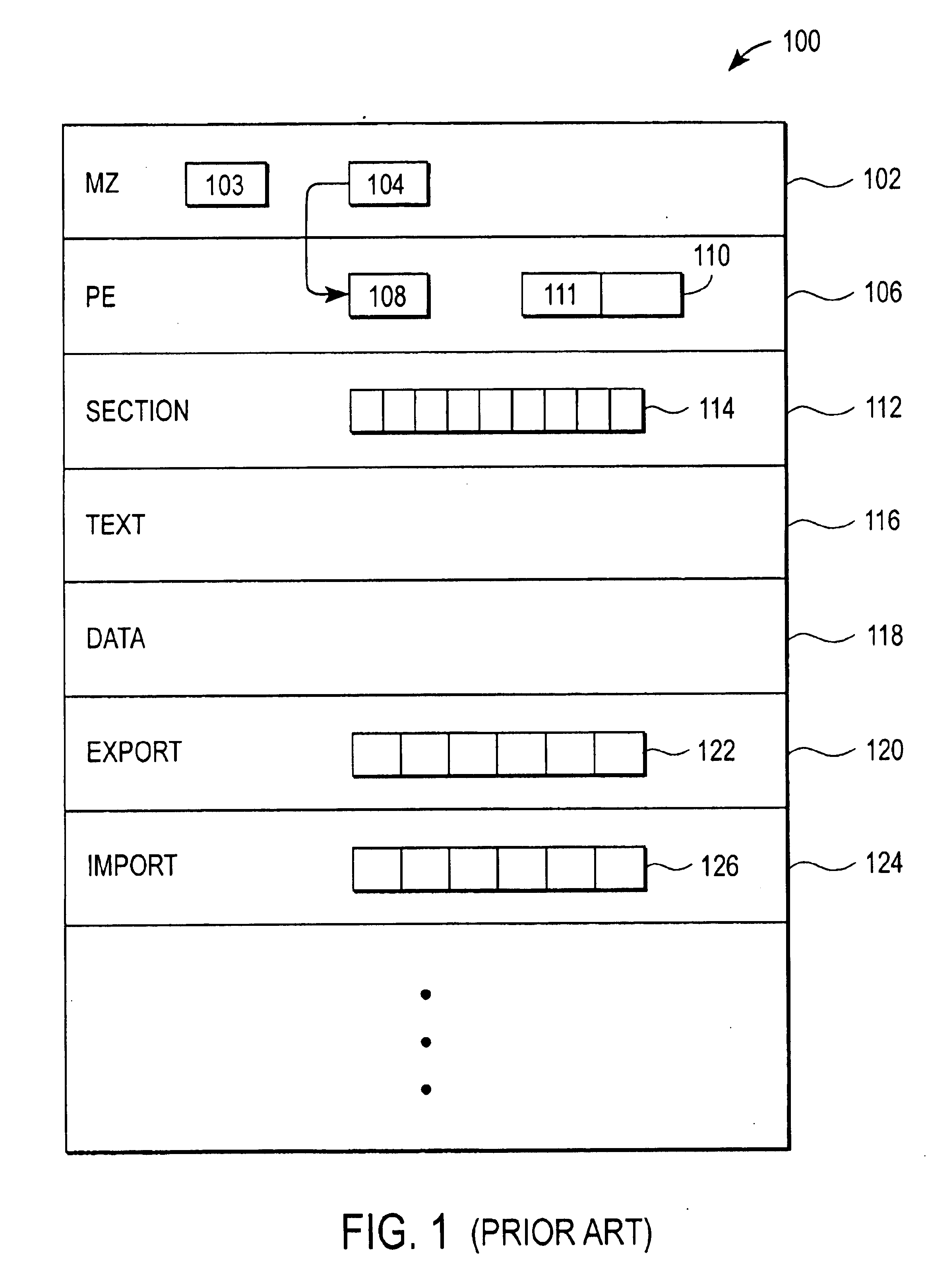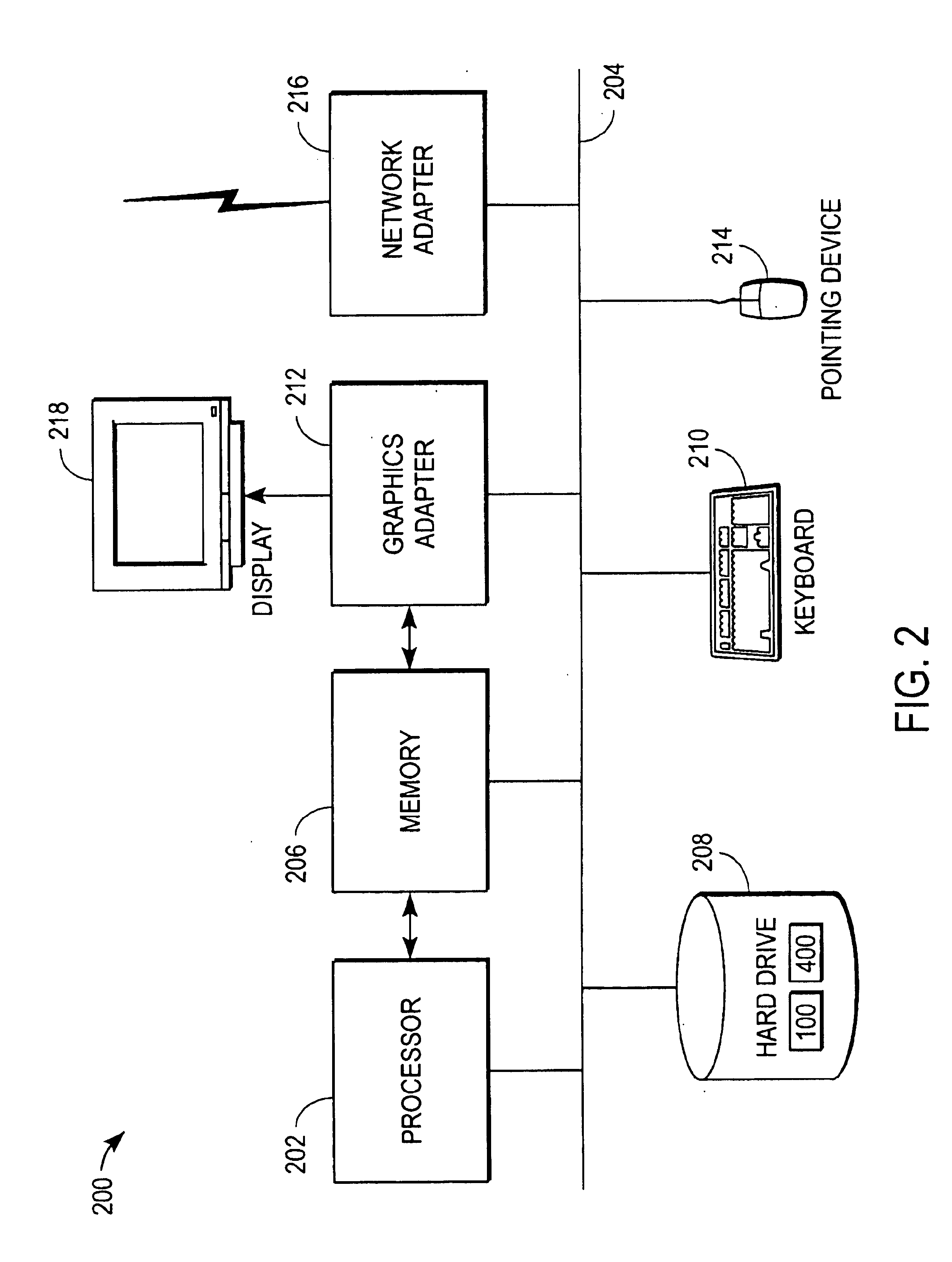Data driven detection of viruses
a virus and data technology, applied in the field of detecting the presence of viruses in files, can solve the problems of metamorphic viruses that cannot be detected with a string search, virus then infects other files on the computer system, and cannot be detected by polymorphic viruses, etc., to achieve the effect of better detection
- Summary
- Abstract
- Description
- Claims
- Application Information
AI Technical Summary
Benefits of technology
Problems solved by technology
Method used
Image
Examples
Embodiment Construction
In order to accomplish the mischief for which they are designed, software viruses must gain control of a computer's central processing unit (CPU). Viruses typically gain this control by attaching themselves to an executable file (the “host file”) and modifying the executable image of the host file at an entry point to pass control of the CPU to the viral code. The virus conceals its presence by passing control back to the host file after it has run by calling the original instructions at the modified entry point.
Viruses use different techniques to infect the host file. For example, a simple virus always inserts the same viral body into the target file. An encrypted virus infects a file by inserting an unchanging decryption routine and an encrypted viral body into the target file. A polymorphic encrypted virus (a “polymorphic virus”) is similar to an encrypted virus, except that a polymorphic virus generates a new decryption routine each time it infects a file. A metamorphic virus is...
PUM
 Login to View More
Login to View More Abstract
Description
Claims
Application Information
 Login to View More
Login to View More - R&D
- Intellectual Property
- Life Sciences
- Materials
- Tech Scout
- Unparalleled Data Quality
- Higher Quality Content
- 60% Fewer Hallucinations
Browse by: Latest US Patents, China's latest patents, Technical Efficacy Thesaurus, Application Domain, Technology Topic, Popular Technical Reports.
© 2025 PatSnap. All rights reserved.Legal|Privacy policy|Modern Slavery Act Transparency Statement|Sitemap|About US| Contact US: help@patsnap.com



